Resources by Joanne Maguire
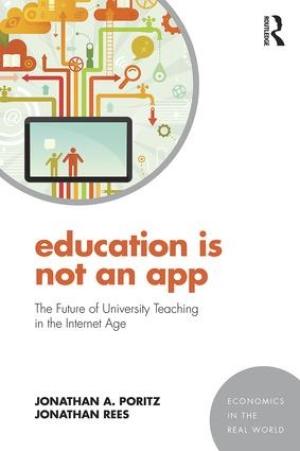
This book captures the frustration of many faculty who are witnessing the decline of faculty governance against the rise of administrative fiat, particularly in areas that impact pedagogical choice. In seven main chapters, the authors provide a detailed view of the systems and decisions that are so often thrust upon faculty. They do a superb job describing the landscape of MOOCs, FLOSS, and LMS in everyday language. They deal with a broad range of issues to show the ways in which faculty are being (sometimes willingly) deskilled through technology. These authors are not dismissive of technological innovation, but they are wary of some aspects of it. They are aware that this book will quickly become outdated but teachers will find that the evidence and core arguments presented here remain worthy of attention. Education is Not an App is a manifesto of sorts, calling faculty to embrace their freedom to make pedagogical choices, a freedom that is often smothered by administrative decree. For instance, the authors argue, new learning management systems are often presented to faculty as across-the-board, time-saving solutions for all, not as the political flashpoints they should be. For these authors, educational technology tends to “seek constrained truth for the advantage of specific powers that be” (3), just as the simplest app constrains as it empowers. Several key assumptions and at least one conclusion here might irk some readers. First is the assumption that face-to-face education is superior to online education, with very limited exceptions. The authors assert that the work that happens between people in classrooms produces more critical thinking, and therefore more meaningful learning than most experiences online. This reader agrees, but not all will. Another assumption is that faculty will have the ability (or the interest) to keep current with new technologies and will have institutional support in using the ones they choose, a lofty goal on both counts. Few faculty have the time to school themselves on emerging technologies, and pressures such as student evaluations reward conformity. These authors conclude, quite rightly, that faculty jobs are in danger because of the “the kind of university governance that makes this kind of [edtech] abuse possible” (37). This book highlights many issues that raise concern (not least, the rise of “instructional designers”), but we do not yet know that student learning suffers in this tech-heavy environment. The authors focus more on academic freedom and far less on student learning. Poritz and Rees are correct that educational technology – with its unbundling and deskilling and administrative oversight – threatens academic freedom and the autonomy of thought we hope to teach our students. It invites monitoring and assessment that faculty should resist; at the very least, teachers should consider at length the costs of simplifying their teaching lives through technology. “At the risk of sounding alarmist” (74), faculty in all disciplines should read this book. Even those who resist as much as possible should be aware of the changing landscape. We gain and lose in the decisions that we make, but we stand to lose more from decisions made for us.
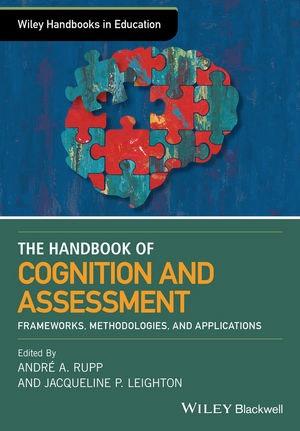
This is a book for assessment professionals; it is the rare teacher in higher education who would be able or willing to get this deep into the weeds of higher education assessment design and deployment. Many of the fifty-two authors contributing to this volume are affiliated with the Educational Testing Service and most seem to be practitioners of assessment for corporations or academic institutions. As the foreword clearly states, the authors are a mix of psychometricians and cognitive psychologists “bringing measurement science into real-world practice” (xx). The book is geared to a multidisciplinary audience, including “educational measurement researchers,” “assessment development practitioners,” and graduate students interested in the measurement of cognition. It is not suitable for classroom teachers interested in exploring course or program assessment. The greatest value of this volume for the average faculty member at any type of institution will be to provide a lens through which to view the many requests from higher administration to comply with particular types of assessment practices. The first part of the book, which comprises ten chapters, covers frameworks for assessment, and several of the earlier articles in this section are general enough to provide useful insight into assessment protocols. Most of the other two sections, focusing on Methodologies (six chapters) and Applications (seven chapters), are so detailed and technical as to be inaccessible to non-professionals in the field of assessment. A few articles stand apart from this: “Assessing and Supporting Hard-to-Measure Constructs in Video Games” by Valerie Shute and Lubin Wang, and “Conversation-Based Assessment” by G. Tanner Jackson and Diego Zapata-Rivera – both provide interesting alternative visions for approaching assessment and offer promising departures from the typical standardized written assessment. This volume is full of cutting-edge research on cognition and assessment couched in language inaccessible to those outside the field. The brief “Final Words” section contains a plea that classroom faculty should note: “in order for the work in this Handbook to have the best chance of finding its way into practice, we need to be ambassadors of this research while understanding that it will require time, patience, and functional prototypes to persuade clients and users to believe the scientific and social evidence” (586). This is not the entry-level volume that will allow faculty to help as ambassadors of this sort. This anthology will be of interest primarily to those whose professional focus for research or practice is cognition and assessment in education.
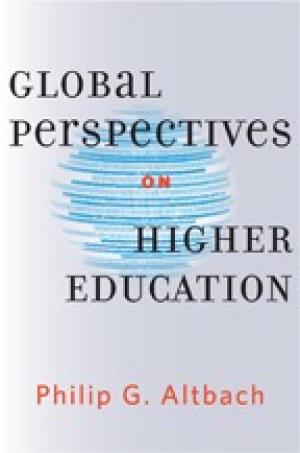
This sprawling volume, which incorporates co-written essays alongside those written by the main author, focuses on several themes in global higher education in the last half century, including massification, systemic inequalities, and the hegemonic role of English. Key areas where higher education has changed significantly include Asia, India, and Latin America; Africa still lags behind in many ways. The book is organized in five major sections: “The Global Context”; “The Implications of Globalization”; “Centers and Peripheries”; “Comparative Perspectives”; and “Teachers and Students.” This review will focus mostly on the final section as most relevant to the readership of this online publication. The authors aim high in their goal of surveying the landscape of rapidly globalizing higher education over fifty or so years. The first few chapters provide a modicum of historical perspective on higher education and go on to examine the most recent “revolution” in higher education through four interrelated forces: “mass higher education, globalization, the advent of the knowledge society and the importance of research universities in it, and information technology” (16). The author(s) note that these forces have fed the growth of privatization, international rankings, and burdensome systems of assessment, among other developments. The essays in the following sections focus in different and sometimes overlapping ways on those themes, noting that the recent internationalization of universities is a necessary response to increased globalization. Anyone who works in higher education would come away with a better general understanding, if not an in-depth knowledge, of trends in higher education after reading these chapters. Depending on the topic, Altbach and his occasional co-authors provide few citations for their claims; for instance, the chapter on “The Globalization of Rankings” includes just one reference, to an essay by Malcolm Gladwell in The New Yorker. Consequently, this volume will be of limited use for those wishing to pursue their own research in these areas. The final section (Chapters Seventeen and Eighteen) is titled “Teachers and Students,” but it is more accurately about the ways academic work is contracted for and compensated as well as reasons for student political activism. Both topics yield slippery data, so both chapters seem more tentative than definitive. It is clear from the data that they do use that disparities in remuneration and opportunity are widespread across academia worldwide. It is also clear that nobody truly understands the driving forces behind student activism except in certain local cases. Neither chapter addresses issues related to curriculum or pedagogy as they focus more on broader institutional and bureaucratic issues. This is perhaps necessary given the broad sweep of this book overall, but it also means that this book will be of less use to readers of this journal than one more focused on actual classrooms and pedagogical continuities and changes around the world. Despite this, readers looking for an overview of the ways globalization has driven the internationalization of higher education will appreciate the broad sweep of this volume.
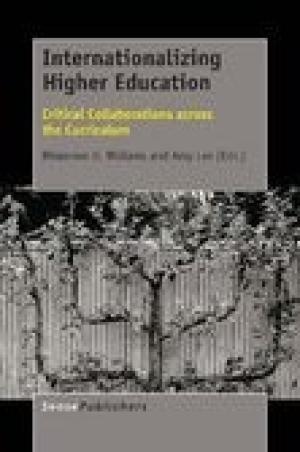
This collection showcases a wide range of approaches to the problems and promises of internationalizing higher education in meaningful and sustainable ways. The essays recognize that these efforts take place in a rapidly changing world, with new technologies and changes in funding and student enrollment patterns affecting efforts to internationalize curricula and campuses. In recognizing these systemic issues, the editors and authors note that many internationalization efforts are undertaken on an ad hoc or case-by-case basis with little effort to systematize and broaden support for internationalization initiatives. These essays together aim to “investigate, to better understand, and to inform intercultural pedagogy that supports the development of mindful global citizenship” (xii). One of the salient findings of the collection is that successful efforts tend to embrace uncertainty rather than tight strictures and rules. Another is that institutional support is necessary for any internationalization efforts to permeate campuses and become integral parts of undergraduate experience. Authors from across the globe and from very different institutional contexts contributed to this volume, with the University of Minnesota very well represented. The book is helpfully divided into three sections. The first, “Mindful Global Citizenship: Critical Concepts and Current Contexts” takes a bird’s-eye view of undergraduate education through the lens of internationalization. The second section, “Developing Intercultural Programs and Practitioners,” focuses more on faculty development and institutional infrastructure that can support internationalization. The third section, “Critical Reflections from Across the Curriculum,” focuses more narrowly on particular disciplines or courses with faculty development and graduate education in the mix. This section provides insight into the ways courses and curricula integrate internationalization in varying ways, and these essays provide the most detail about course and classroom experience. The most relevant essays for readers of this journal are in this third section. These include Solheim et al.’s “Illuminating a Course Transformation Journey”; Gibson et al.’s “Social Media and Intercultural Competence: Using Each to Explore the Other”; Hammell et al.’s “On Becoming a Global Citizen: Critical Pedagogy and Crossing Borders in and out of the University Classroom”; and Jackson’s “ ‘Unpacking’ International Experience through Blended Intercultural Praxis.” Each of these essays relies on meaningful data (mostly qualitative) and contains sufficient detail about process and product to make some of their work replicable. Each also embraces a call to reflection, which helps each essay feel more complete. Perhaps most valuable here is the recognition that internationalization does not just mean study abroad or international student exchange. Rather, internationalization can happen through, for instance, social media, films, and learning communities on campus. In short, internationalization can be anywhere and everywhere. Overall, the essays in this collection are of varying quality, and several contain grammatical or typographical errors. That aside, the subject matter is likely appealing to many who teach religious studies or theology in higher education, as international perspectives are often the bread and butter of classroom experience. This book will appeal most particularly to those who are interested in building programs or courses that intersect with institutional internationalization efforts.

This book is pitched to college and university faculty at all career stages, and it stands out from other books in this category because of its research-based findings and its thoughtful case studies. The authors based their guidance on a year-long research study of 688 faculty from a wide range of institutions as well as on years of personal professional experience. The book covers the major aspects of an academic career: effective teaching and promoting student success, defining and facilitating collegiality and positive relationships within departments and with administration, conducting research, performing effective service to the institution or guild, and moving through the ranks to tenure and beyond. This book’s strengths include the liberal use of longer case studies and shorter scenarios, each of which works through a series of questions and proposed resolutions (for case studies) and a challenge question and outcome (for scenarios). The initial warm-up questions are often quite broad (for example, “Is there any general advice you think might be helpful to your friend?” [6]) while later questions tend to be more specific and thoughtful, requiring the reader to consider multiple factors and angles within one scenario. These vignettes were well written and thoughtfully prepared, and on the whole they engage the reader quite effectively. That the scenarios are so clearly taken from actual experience makes them more valuable, especially to newer faculty members who haven’t yet seen it all. Two chapters of this guide focus specifically on teaching. The first, titled “Teaching Effectively in the Classroom,” strongly promotes active learning over lecturing. The case studies in this section deal with common problems, such as how to respond to poor results in student evaluations and what to do when the entire class fails an exam. This chapter emphasizes the importance of learning how to teach large courses effectively, although the authors do include a section at the end of the chapter on “teachniques” for teaching smaller courses. Many new faculty and older faculty who are retooling will find this chapter a useful primer. The second chapter focuses on “Promoting Student Success and Engagement,” with a focus on developing friendly but not-too-familiar relationships with students. Using research and experience, the authors explain the pivotal importance of faculty in shaping students’ lives and ways of thinking well beyond the classroom. Taken together, these two chapters address many issues of interest to readers of this journal, and the remainder of the book is equally valuable for those looking for guidance and food for thought. As a guide designed for all faculty, this book necessarily elides issues of race and gender, for instance, that significantly shape faculty experience. That said, the book accomplishes much in a short space, and each chapter of the book is short and well-structured. Above all, this book uses the very techniques it suggests for effective teaching, and new faculty members in particular will find themselves better prepared for everyday faculty life after thinking through these realistic case studies.
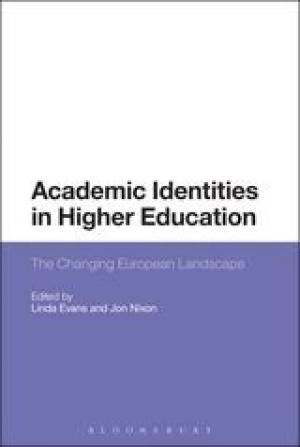
Academic identity, like all identity, is fluid. This volume places questions about academic identity in the equally fluid context of “Europe,” which is here defined as at once united and fragmented, particularly after the economic crises of 2008. This volume pulls together thirteen articles in three sections: Frameworks and Perspectives, Academic Trajectories, and Formations and Re-formations. The authors are not sociologists of life course or scholars who study academic identity; they are, more usefully for this volume, speaking from their own contexts and experiences in European higher education from the late twentieth into the early twenty-first centuries. The editors have done a fine job choosing and grouping these essays, many of which were written by authors in their second or third languages to comply with market demands for English publication. This is one of the many strengths of the book, as it illustrates the kinds of demands that are placed on European academics that are absent in many ways from American contexts. Nevertheless, much is familiar here: academics in neoliberal systems of mass higher education struggle with ever-increasing bureaucracy, top-down management, and the encroachment of academic “professionalism.” Pressure to be represented well in world rankings tends to encourage institutional systems of assessment and auditing of outcomes that shape the academic enterprise as an inward-looking, self-serving part of a labor-driven economy and individual academics as cogs in the machine. As Jon Nixon states in his introduction, treating academic work like labor, as a matter of “pre-specified outcomes and destinations,” produces an unfortunate mismatch: “Academic identity is – to come full circle – a process that is uncertain in direction and indeterminate in outcome” (13). To treat academic work as labor is to misunderstand the potential benefits of outward-looking institutions that value intellectual autonomy and innovation above target-setting and performance measures. Many of the chapters in this volume could stand alone as case studies; each presents its own particular balance of interrogating biographical, institutional, or broader contextual identities and each brings a coherent and defined voice to the shared project. It is impossible to capture the richness of each of these chapters here, and each somehow manages to consider an individual life within the vast institutional, sociocultural, historical, and political contexts in which that life is lived. Although there is nothing specific to either religious studies or theology in this volume, there is much here that will resonate with academics who struggle with being pulled away from research and teaching to comply with institutional mandates. This volume should help academics in all disciplines to reflect on the power of context and particularly institutional context to shape lives and careers. Implicit here is a call to embrace the best in higher education despite the “regulations, financial incentives, rewards, quality standards, as well as academic, public, and professional values” (6) that constrain and give shape to our identities. These essays hint that a mix of resilience and subversion might well be the academic’s best allies.
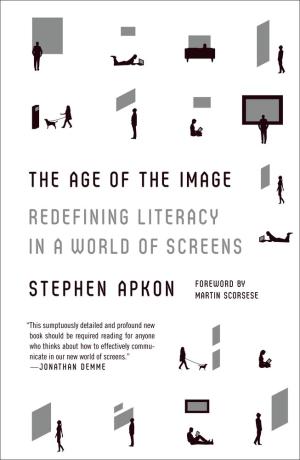
Teachers routinely complain that students do not read well or enough. What they mean by this is that students do not know how to analyze written texts, in part because they fail to engage regularly with written texts. Stephen Apkon’s book challenges this traditional focus on verbal literacy to advocate strongly for visual literacy, particularly in K-12 education. In a world saturated with screens and images to be decoded, Apkon, the founder and executive director of the Jacob Burns Film Center, argues that we ignore visual literacy at our peril. Few would argue with Apkon that we live in “the age of the image,” and in response to our situation Apkon argues for the importance of understanding the grammar of the visual. He does so by examining several interrelated perspectives on images and visual storytelling, such as brain science, advertising, and film techniques. He also provides a history of visual literacy that parallels in many ways the development of visual literacy. Rather than buy into the common parental and academic moral panic over “screen time” used by digital native “screenagers,” he encourages his readers to embrace screens and images by learning intimately how they work. This will benefit both producers and watchers, he argues, and can help classrooms function more seamlessly in our screen-obsessed culture. This book will be useful to teachers who want food for thought but not direct guidance. Apkon notes early on that “As new literacies emerge, they don’t negate more traditional forms of literacy, but rather embrace them wholly” (10) but then goes on to champion what sound like fairly vapid if contextually apt viral videos as examples of visual literacy achieved. Apkon’s bias is understandable, but it seems to leave other literacies in the dust, despite the author’s claims that he’s not doing just that. The chapter devoted to teaching is full of information, including a sketch of the history of technologies in education, but it does not detail how one might go about this in a classroom or curriculum. In Apkon’s favor, he calls for a high school graduation requirement of a five-minute film that illustrates key visual grammatical skills and incorporates written work as well. That kind of balance seems appropriate and necessary. This review will be published in the traditional written format (although if I were to follow Apkon’s prescription I should probably submit a well-edited video). I am wary of Apkon’s overwhelming enthusiasm for visual storytelling, placed in his analysis as top of the hierarchy of types of communication. Phrases such as “the unstoppable rise of visual expression as a popular means of conveying truth” seems remarkably optimistic: images, like words, can be used for powerfully negative propaganda as much as they can for “truth.” In sum, this book would have been more useful had it presented a more balanced view of the many literacies and illiteracies made possible by today’s technologies.
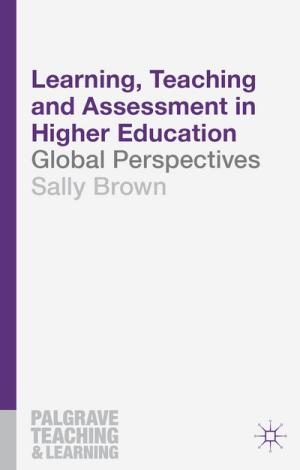
This global study of teaching, learning, and assessment goes beyond the typical single country context to extend to good pedagogical practice on six continents.The argument of each chapter is supported by examples of good practice accounts from around the world, a collection that forms a refreshing change from a generic case study model. Although the examples lean most heavily toward English-speaking institutions and classrooms, there is significant attention paid to various elements of pedagogy from many cultural perspectives. The author takes great care throughout the book to consider all elements of the changing higher education landscape, including the changing student body, changes in technology, and changes in expectations about the goals of higher education and graduate employability. The twelve chapters of this book take a comprehensive view of diversity in higher education teaching, learning, and assessment. The book opens with a consideration of cultural mores and assumptions that directly affect interactions in higher education. Brown looks both to the past and the future in subsequent chapters, noting pedagogical traditions and innovations in the context of today’s higher education landscape. She argues that we must adjust to a technology-rich world that necessitates more focus on “learning how and learning why than on learning what” (21). Her view of technology in the balance as both a distraction and a valuable addition to certain aspects of both teaching and learning is refreshing, as so many books either glorify or decry technology in classrooms and society. This ability to see things in the balance is one of the greatest strengths of this book: rather than arguing for a “best” way to teaching or learning or assessment, this book offers multiple possibilities from multiple contexts and thus leaves much to the reader to judge based on his or her context and constraints. Brown identifies a few global trends. The most widespread seems to be a move from transmissive to transformative education. She notes that there is a “movement from perceiving the university teacher as an all-knowing, unchallengeable authority figure” (27) and parallel a movement by institutions and disciplines toward encouraging learning outside of the lecture hall. Another trend is teaching toward the multiple literacies expected of a twenty-first century graduate, looking well beyond academic literacy to digital, assessment, and interpersonal literacies (88). Finally, Brown notes that all education needs to think of itself as taking place in a global environment. This book is itself a fine way to encourage broader thinking about pedagogical contexts in higher education: our students are shortchanged when we privilege our own pedagogical traditions and ignore the broader, global context of higher education. The strengths of this book are many. For instance, the author provides substantive and exhaustive bulleted lists in each chapter, a diverse set of highlighted good practice accounts, and a full chapter devoted to higher education teacher development. The book is easy to navigate, written in clear prose, and at once expansive but grounded in particulars. I would recommend this book highly to teachers and administrators in higher education across the disciplines.
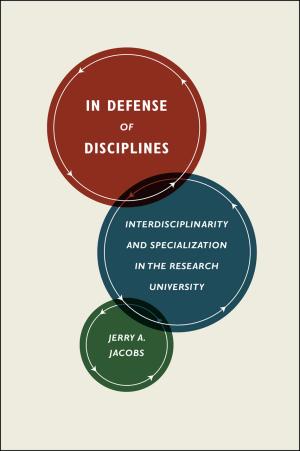
What is the use of academic disciplines? Answers to that question have encouraged the growth of interdisciplinary programs on many campuses, either by simply encouraging conversation among people in different fields or by at least partially dismantling the system of disciplines. This book employs data and case studies to challenge the enthusiasm for this potentially disastrous revolution. Jacobs argues that interdisciplinarity already exists everywhere in higher education (123) and that efforts to push for more will not pay dividends worth the effort. He warns administrators and faculty away from seeing interdisciplinarity as an end to itself or a way to significantly change rates of scholarly cross-fertilization. In short, this book is a call to nurture and appreciate what already exists. The focus is largely on the research agenda of larger universities, but Jacobs dedicates a chapter to considering “integrative education” for undergraduates, noting that “The question of how the education of undergraduates should be organized is just as large and just as complex as the issues pertaining to research” (188). An integrative education is distinguished from an interdisciplinary education by its approach rather than the number of its disciplinary parts. Jacobs notes that interdisciplinary programs such as African American studies and women’s studies, often founded because of faculty interest, generally have low student enrollment, in part because students can find integrated learning in cross-listed classes and double majors. Jacobs sees efforts toward creating systems to promote interdisciplinary majors as folly. Based on the evidence, “we cannot say that interdisciplinary education represents a discernible improvement over the traditional disciplinary fields” (208). According to Jacobs, the biggest challenge to undergraduate liberal arts programs are the more vocational, applied majors, such as communications and business, fields that do not encourage critical thinking or the kind of breadth needed for true integration of knowledge. To Jacobs, rapid changes in our world require that students learn less tangible skills, such as making connections and seeing things from multiple perspectives. The applied fields have become increasingly myopic: he notes that liberal arts disciplines are far less likely to splinter into subspecialties than applied fields that split due to job market pressures (Table 9.2 identifies twelve specialties within the combined fields of philosophy and religious studies). Jacobs writes, “As we have seen, reformers typically define the term ‘integrated’ as synonymous with broad, but, ironically, education that is holistic, integrated, effectively combining theoretical and applied dimensions, experiential, and classroom-based knowledge, is more likely the more highly circumscribed the topic and setting” (197). Too much specialization, he argues, blunts this effect. The conclusion here is that “the liberal arts are not the problem but rather the best hope for a broad and demanding education in a world that increasingly depends on educated citizens and open-minded professionals” (189). This book is recommended to anyone interested in the rise (and decline?) of interdisciplinarity on college campuses and debates over the value of the liberal arts.
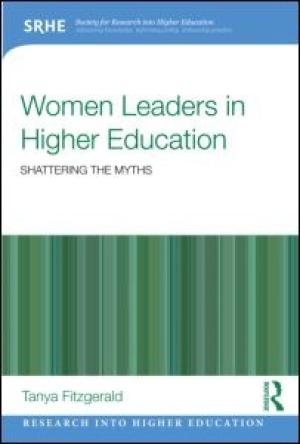
Women involved or interested in leadership in higher education will find this book to be at turns inspiring and somewhat painful to read. Any woman who has held a position of leadership likely shares similar stories of personal sacrifice and institutional prejudice; indeed, many of the stories in this book paint a picture of academia as hostile, male territory. Tanya Fitzgerald manages to add a twist to this tale in the way she weaves together stories from her ethnographic research with senior women leaders in universities in Australia and New Zealand. Her work focuses primarily on the trials and triumphs of women as they extend themselves mentally, emotionally, and physically in their jobs, but the book manages to offer a sense of hope in part because the author chooses to frame her analysis around the experiences of Indigenous women. This inclusion and focus gives the book leverage in a field flooded with similar studies. Fitzgerald uses the experiences of these women to show that women’s encounters with academic institutions are best described as “continuous struggle and compromise” (25) that nevertheless opens the way for new ways of conceiving of leadership in higher education. Fitzgerald teases out the complexities of the tasks facing women who oversee diverse staff, who are expected to “think big” while handling minutia, and who serve as mentors for women wanting to break into the leadership roles. Women’s lives as academic leaders is, in one word, “messy.” Fitzgerald is also appropriately attentive to disciplinary context and institutional climate, and her subjects come across as real individuals in real circumstances. Her overall goal is to push up against the myths that keep women as institutional housekeepers or otherwise limit their potential as leaders (22) and she manages to do that, albeit in a limited and incomplete way that fits with the stories she includes. She is careful not to advance any “grand narrative,” preferring instead to celebrate the individuality of her subjects as they improvise their lives. The myths being shattered here include the myth of opportunity (which assumes that gender equality is established) and the myth of what leadership ought to look like and how women ought to behave (17). Overall, Fitzgerald paints a picture of academia as a land alien to women and women’s ways of being, so that women who find themselves in position to lead often have to adjust to the rules or courageously make up new rules. Fitzgerald highlights the precarious positions held by women in leadership roles, and she ends on a point of hope that seems a bit of a stretch based on her evidence. Nevertheless, I would recommend this study to any woman (or man) in leadership, either in higher education or the clergy. Although Women Leaders in Higher Education does not focus much on teaching, many women in higher education will find themselves faced with the question of whether to move into administration. This book will shed light on that personal and professional choice.